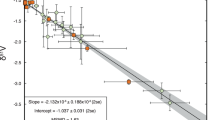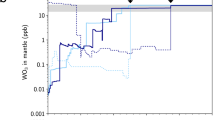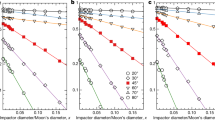Abstract
A NUMBER of mechanisms for the formation of the Moon have been suggested; fission of the Earth, precipitation in a hot gaseous silicate atmosphere, independent formation in orbit about the Earth, and independent formation elsewhere in the solar system followed by capture by the Earth1. Although the last of these mechanisms has been admitted to be improbable by its proponents, they have shown that it is by no means impossible dynamically2. The principal objection to this mechanism is the strange composition of the Moon. It has been recognized for many years that the low mean density of the Moon implies that it is highly deficient in metallic iron. The lunar exploration programme has also shown that the Moon is much more deficient than the Earth in the more volatile of the condensable elements. Because of the apparent difficulty of satisfying these composition constraints in a theory in which the Moon is formed elsewhere in the solar system, I have tended to favour the other mechanisms mentioned above3,4.
This is a preview of subscription content, access via your institution
Access options
Subscribe to this journal
Receive 51 print issues and online access
$199.00 per year
only $3.90 per issue
Buy this article
- Purchase on Springer Link
- Instant access to full article PDF
Prices may be subject to local taxes which are calculated during checkout
Similar content being viewed by others
References
Kaula, W. M., Revs. Geophys. Space Phys., 9, 217 (1971).
Singer, S. F., EOS. Trans. Am. Geophys. Union, 51, 637 (1970).
Cameron, A. G. W., in The Earth–Moon System (Marsden, B. G., and Cameron, A. G. W., eds.) (Plenum Press, New York, 1966).
Cameron, A. G. W., EOS. Trans. Am. Geophys. Union, 51, 628 (1970).
Hanks, T. C., and Anderson, D. L., Phys. Earth Planet Int. (in the press).
Anderson, D. L., preprint, IAGC Symp. Cosmochem. (Cambridge, Mass., August 1972).
Sonett, C. P., Schubert, G., Smith, B. F., Schwartz, K., and Colburn, D. S., Geochim. Cosmochim. Acta Suppl., 2, 2415 (1971).
Marvin, U. B., Wood, J. A., and Dickey, jun., J. S., Earth Plan. Sci. Lett., 7, 346 (1970).
Grossman, L., Geochim. Cosmochim. Acta, 36, 597 (1972).
Cameron, A. G. W., and Pine, M. R., Numerical Models of the Primitive Solar Nebula, Icarus (in the press).
Cameron, A. G. W., Accumulation Processes in the Primitive Solar Nebula, Icarus (in the press).
Lewis, J. S., Earth Plan. Sci. Lett., 15, 286 (1972).
Author information
Authors and Affiliations
Rights and permissions
About this article
Cite this article
CAMERON, A. Orbital Eccentricity of Mercury and the Origin of the Moon. Nature 240, 299–300 (1972). https://doi.org/10.1038/240299a0
Received:
Issue Date:
DOI: https://doi.org/10.1038/240299a0
This article is cited by
-
The formation of the moon
The Moon (1974)
-
The Origin of the Moon
Nature (1973)
-
Dynamically Plausible Hypotheses of Lunar Origin
Nature (1973)
-
Properties of the solar nebula and the origin of the moon
The Moon (1973)
Comments
By submitting a comment you agree to abide by our Terms and Community Guidelines. If you find something abusive or that does not comply with our terms or guidelines please flag it as inappropriate.



